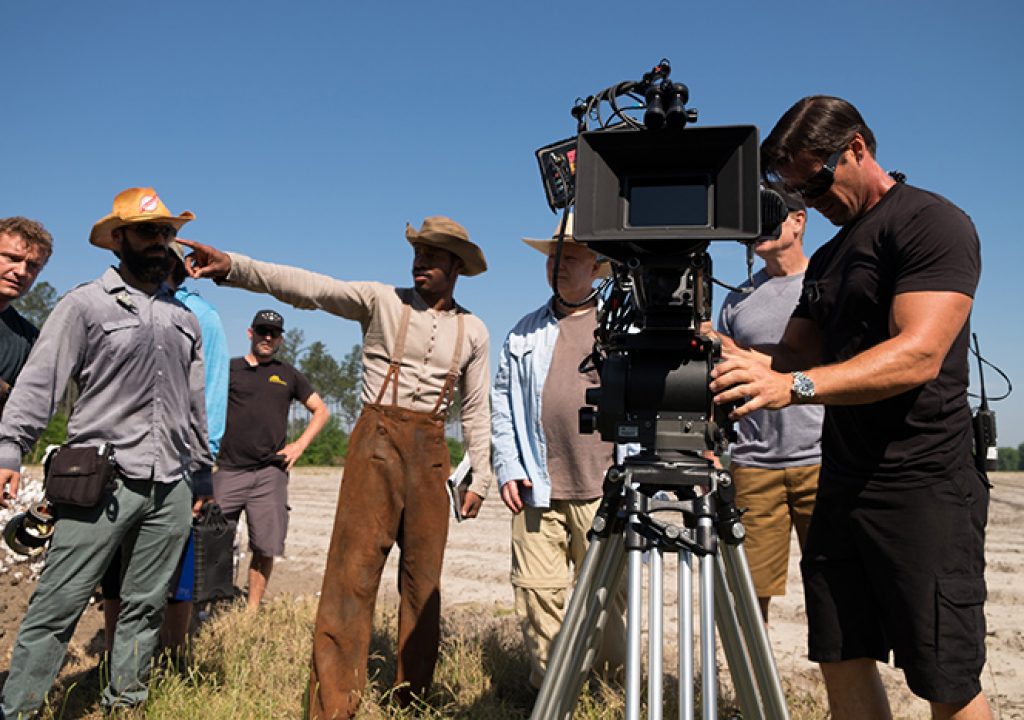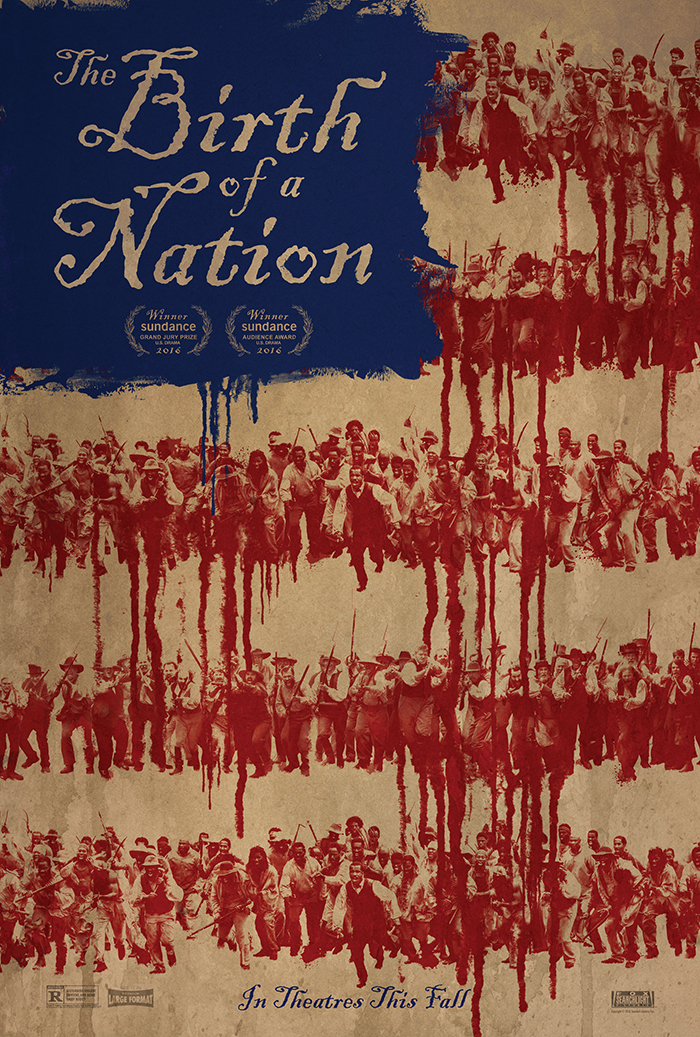 Steven Rosenblum, ACE has edited more than two dozen movies including “Glory” (1989), “Braveheart” (1995), “X-Men” (2000), “Pearl Harbor” (2001), “Last Samurai” (2003), “Blood Diamond” (2006), and the film I called him to discuss, “Birth of a Nation.”
Steven Rosenblum, ACE has edited more than two dozen movies including “Glory” (1989), “Braveheart” (1995), “X-Men” (2000), “Pearl Harbor” (2001), “Last Samurai” (2003), “Blood Diamond” (2006), and the film I called him to discuss, “Birth of a Nation.”
HULLFISH: One of the first things that I noticed in the movie is something I love to talk about which is jumps in time, that in all movies you have to have these jumps in time and one of the ones that I noticed that I really liked is the scene at the beginning where this slave child, Nat, sees a book sitting on the back of a rocking chair, then you cut to the chair rocking back and forth and there’s no book on it and he’s gone. Talk to me a little bit about making those leaps in time.
ROSENBLUM: Time in movies is a really interesting topic. I once got a script and it said on the front page, “All action in this picture is going to take place in real time,” and I closed the script and said I don’t want to read this, I have no interest in it. Movie time is either really sped up or really slowed down. That’s what we like about movies. That’s where drama is. Jumps in time are wonderful because essentially by ellipses you can thrust the viewer to the result of the situation, and that’s what we did with the book. That’s time jumping. That’s what movies do. They cut from one scene to another scene. It could be the next day. It could be the next minute. It’s a timed cut, and those are what make movies move. We want to see a person life in two hours and thus time has to be compressed or time has to be elongated for the moments that really matter.
HULLFISH: I talked to Joe Walker about “12 years a Slave” and he talked about how there is a very long shot of Solomon hanging by his neck but that he was able to sit that long because they compressed time so much before that, and they compressed time again immediately after that.
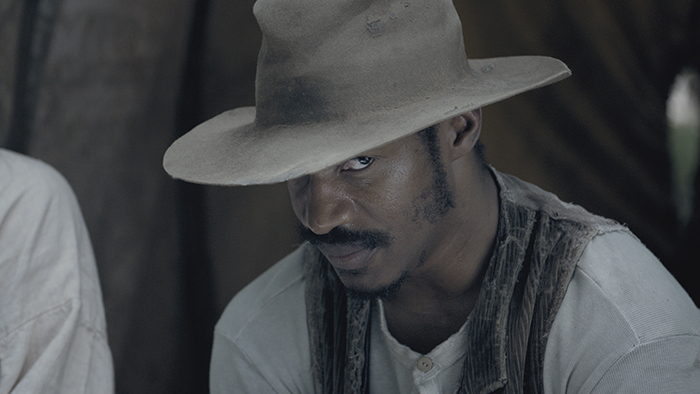
ROSENBLUM: Right and that’s one of the lessons on how to film something: you can’t have the same pacing in scene after scene after scene. The audience just won’t take anything in. They need some type of gratification. If it’s a comedy the audience will give you three minutes to do whatever you need to do if they’ve just had a big belly laugh. Or if you have a grueling powerful scene like in “Birth of a Nation” where the slave Will’s teeth are being drilled out followed by Nat’s emotional speech—-You then have time to then set up something new because the audience needs to have a little relief, and that’s the beauty of time compression. I love shots that last forever. I tend to be an aggressive editor which often times means I tend towards cutting too quickly and then I have to slow down and pace myself again. But a lot of that has to do with looking for a moment like when Denzel got whipped in “Glory” where I could let the camera just keep pushing in on his face without cutting until that one big tear comes out and that’s a long shot that we don’t move from and that’s just heaven. That’s what movies are.
HULLFISH: The other one I noticed is when Nat has done the big climatic thing that happens at the end of the movie and he kind of disappears for a while and he comes back and Cherry is hanging up laundry. There’s a scene where he’s talking but you never cut to him. Tell me a little bit about the scene. Did you have a shot of him talking?
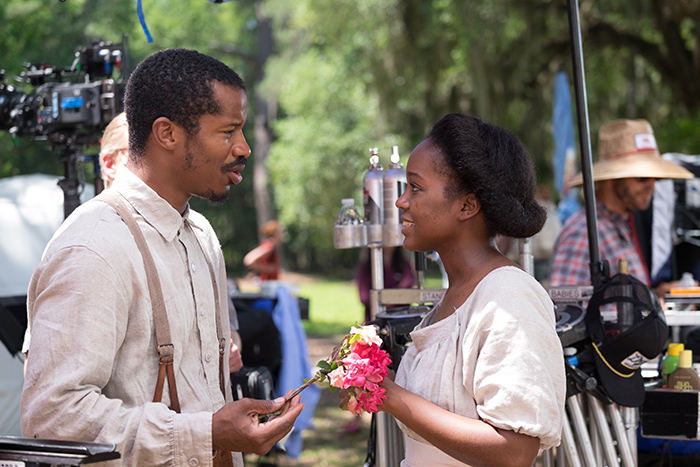
ROSENBLUM: Never, that was Nate’s directorial choice. That scene is entirely dependent on Aja’s performance. And she is wonderful in it. I wound up wanting to put in a little bit of what is she doing – hanging laundry to dry. But mostly its just on her and she is just simple and perfect. She is a phenomenal actress and I was completely taken by her at almost every level. Nate shot a big, big film in 25-28 days. He didn’t have a lot of time—often he couldn’t even turn the camera around and shoot the other side of a scene. If you come out of television you learn to shoot oners (an entire scene from a single set-up, with no coverage) so that when you get to scenes that require a lot of coverage you have the time to do so.
HULLFISH: You mentioned to me earlier how quickly you had to do this and get on to another movie. What was principal photography, when did you get done with that, when did you have to move on?
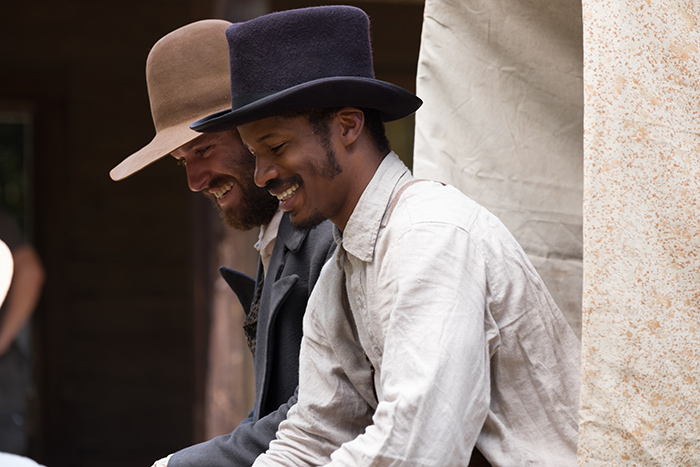
ROSENBLUM: This is a rough one because I am really a full service guy. I like to finish films, I like to start them at the beginning, cut them, I like the music process, I like the dubbing, I like it all. I almost never leave a film before it is finished. But Nate sent me the script and I read it. I loved the script, but I didn’t even know if I was free. I was working on a Mel Gibson film “Blood Father,” which I had been hired to recut and I had “The Promise” coming up probably in August or September. It turns out I only had about ten or twelve weeks for Birth. Consequently, I finished cutting early in September but the movie wasn’t finished. I got it into a shape that we really liked but we knew there was going to be more cutting to do and at some point they brought on Joe Hutshing for a little bit of time. They also did a little bit of reshooting. Music was done without me, which is unfortunate because that is my favorite part of the process. Editing is music. I see movies as image and music and maybe a few words here and there. I temped the picture as I went musically, and I know that was a blueprint, a template for what the music should do, and when I first saw the film with Henry Jackman’s score it was the actual completely finished film.
HULLFISH: Do you remember what you temped with?
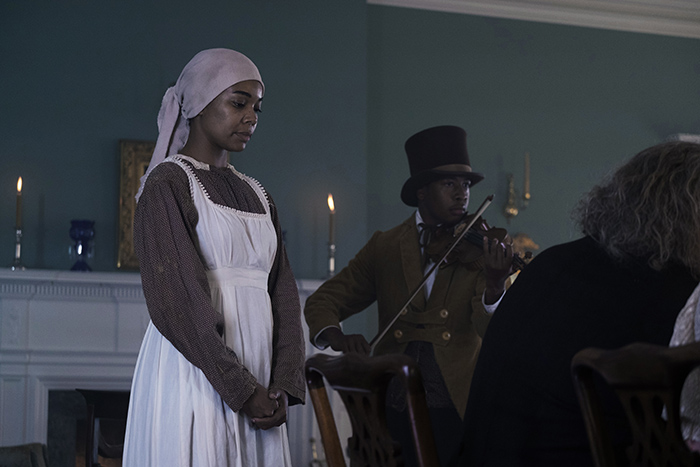
ROSENBLUM: Yes, for big themes I used the music from a film I had worked on “Blood Diamond.” James Newton Howard’s theme for Solomon Vandy’s finding his family was used as the main theme in the movie. For other themes I used a lot of “Beloved” by Rachel Portman. There was a lot of stuff in there I really liked. I used it for the dream sequence in the front and for other things—I found it to be a beautiful, interesting and provocative score. And beyond that there was a piece from “Birth” that I find fascinating that Desplat wrote. I think it is entitled Elegy. In the sequence after the dental scene where Nat gives his speech to the slaves I used that piece of music there and also, I believe when he says grace at dinner— those are also some of the most important emotional sequences in the movie along with the very end sequence. Which, thank god, it has a real powerful ending. That movie is a hard one because it has a strange unevenness for much of it and yet it has such enormous power that it just carries across everything and the end is beautiful, absolutely beautiful.
HULLFISH: Tell me a little about your relationship with the director. Since you guys didn’t know each other, how did that collaboration work for the two of you?
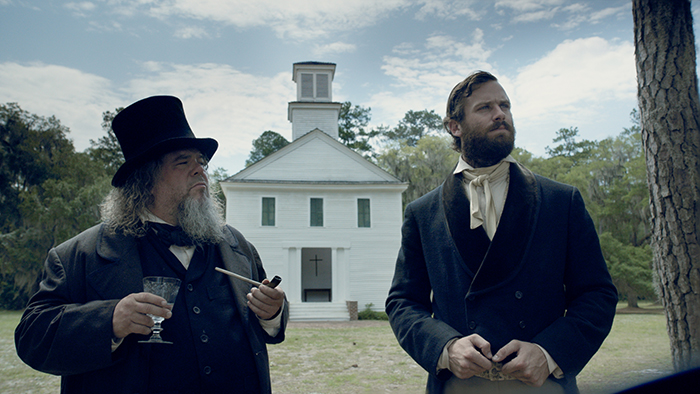 ROSENBLUM: I was working on “Blood Father” and I had a half a day where I had some time to myself and I said I’m just going to pick a scene, I’ve been looking at dailies every night or every other night to see what Nate’s shooting, and I just picked this dental scene. So that’s the first scene I cut and I sent him that whole sequence of the tooth scene and speech thereafter and he called me and said, “I’m blown away.” I said, “You have something special here and I’m going to be the first one to tell you.” And when he came back after shooting for four weeks plus or maybe it was five weeks almost, I showed him the cut of the movie. He had never given me one note on any scene. We sat down and started to discuss what he would like to do. Every day, usually when I started to get hungry around twelve o’clock, we would actually stop and have a discussion about the world for about an hour and then we’d go eat. That’s how the best collaborations work. It’s not only: “can I eat with this person?” it’s “do we have some intellectual exchange that’s going to keep this friendship alive?” which we did. And every day I learned something from him and I hope he learned something from me. And by that I mean the way in which we see the world: he, an African-American and me a white, middle-class American Jew. It was eye-opening, absolutely eye-opening and you learn to understand what those hidden biases are that we all have. They’re hidden from you. For example, we had a screening and at the screening, which went well, it was with friends, he said, you know, I only had a couple of African-Americans there and I said, really, I didn’t even notice and he said of course not. And I went “oof” because it was another lesson learned. Of course not because my world is made up of mostly white people and mostly white middle-class situations. An entirely different world than what he came from. And I just tried to keep opening my eyes to how he saw the world.
ROSENBLUM: I was working on “Blood Father” and I had a half a day where I had some time to myself and I said I’m just going to pick a scene, I’ve been looking at dailies every night or every other night to see what Nate’s shooting, and I just picked this dental scene. So that’s the first scene I cut and I sent him that whole sequence of the tooth scene and speech thereafter and he called me and said, “I’m blown away.” I said, “You have something special here and I’m going to be the first one to tell you.” And when he came back after shooting for four weeks plus or maybe it was five weeks almost, I showed him the cut of the movie. He had never given me one note on any scene. We sat down and started to discuss what he would like to do. Every day, usually when I started to get hungry around twelve o’clock, we would actually stop and have a discussion about the world for about an hour and then we’d go eat. That’s how the best collaborations work. It’s not only: “can I eat with this person?” it’s “do we have some intellectual exchange that’s going to keep this friendship alive?” which we did. And every day I learned something from him and I hope he learned something from me. And by that I mean the way in which we see the world: he, an African-American and me a white, middle-class American Jew. It was eye-opening, absolutely eye-opening and you learn to understand what those hidden biases are that we all have. They’re hidden from you. For example, we had a screening and at the screening, which went well, it was with friends, he said, you know, I only had a couple of African-Americans there and I said, really, I didn’t even notice and he said of course not. And I went “oof” because it was another lesson learned. Of course not because my world is made up of mostly white people and mostly white middle-class situations. An entirely different world than what he came from. And I just tried to keep opening my eyes to how he saw the world.
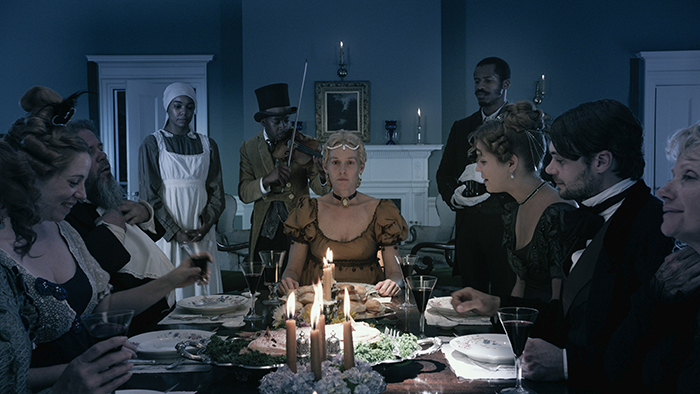 In terms of how the film worked, I’d like to talk about the dinner scene because I cut the scene as a drama about a white plantation owner who was trying to bring his family back to a level of success and power that they once enjoyed and a sister who is a little conflicted and I thought it had a good feel to it. And when Nate looked at the scene he said, “I probably should have told you that I’d really like to see this scene from the slave’s point-of-view.” I thought, “Duh, of course!” Because that’s what the movie’s about. These are very obvious, but inherent biases that aren’t so obvious when you’re just thinking on auto-pilot and it just changed my world. It changed the way in which I look at everything, seriously. Every day was like that.
In terms of how the film worked, I’d like to talk about the dinner scene because I cut the scene as a drama about a white plantation owner who was trying to bring his family back to a level of success and power that they once enjoyed and a sister who is a little conflicted and I thought it had a good feel to it. And when Nate looked at the scene he said, “I probably should have told you that I’d really like to see this scene from the slave’s point-of-view.” I thought, “Duh, of course!” Because that’s what the movie’s about. These are very obvious, but inherent biases that aren’t so obvious when you’re just thinking on auto-pilot and it just changed my world. It changed the way in which I look at everything, seriously. Every day was like that.
HULLFISH: Perspective is huge for an editor, right? Determining the vantage point for telling the story.
ROSENBLUM: Absolutely. And whether you’re going to tell it as text, whether you’re going to tell it as subtext, whether it’s going to be behavioral. In “Courage Under Fire,” Matt Damon is chain smoking and he’s got a heroin problem. And rather than play the scene as a dialogue between him and Denzel Washington, I decided whenever Matt did anything with the cigarette: fumbled it, picked it up, put it down, re-lit it, had one lit and another one going, I would play that just to see what happened. And it’s in the movie that way. Because all that stuff, the subtext of the scene, became the spine of the drama of what was wrong with this guy. And it taught me big lessons. When I was cutting the pilot of the TV show thirtysomething I thought wouldn’t it be interesting if you played most of a whole conversation between two women on a baby that one is carrying. It tells the audience in a visual way what the drama of the relationship is. And It just puts the viewer in the position of having to look at the world in a different way and we did that a lot with “Birth of a Nation” because that’s was what was foremost in Nate’s mind, not the power structure, but the oppressed – the not seen.
HULLFISH: I was struck by how, as a slave, Nat wouldn’t be able to voice his distaste or his disgust or any of that stuff openly. You never get to hear him voice that. Everything is done with him looking, right? Reacting.
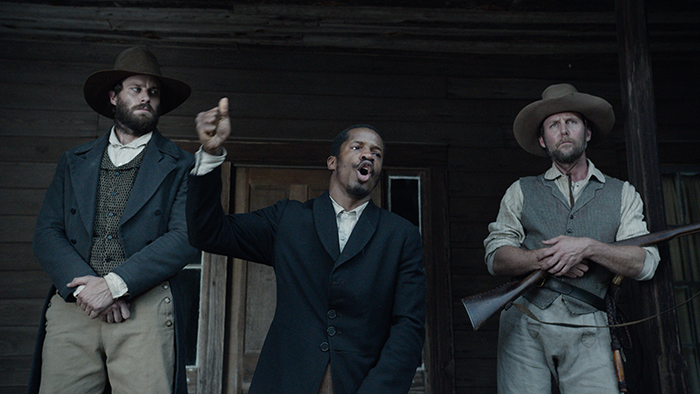
ROSENBLUM: Right. He’s a powerful actor though, Nate. That’s a powerful, powerful performance and as an audience member you get it, but in a more general way, I’m a big believer in not telling the audience what they’re seeing. And I think directors, a lot of them, want the words to be primary. Often we don’t need those words and it varies from person to person. I prefer a much less linear approach to movies than a lot of people who need to go A to B to C to D to E. I often like to go A to E if I can. And Nate was completely comfortable with that. There’s a big montage at the end of the movie and it features the eclipse. Originally, that was three or four scenes, and when I first put that together for myself, I didn’t want to have all that exposition. I thought, what happens if I make a really non-linear montage with the house slave coming in and having his conversation while we see all these other things occurring and keep coming back to that conversation as a spine, what does that do? And it did a lot so that’s how it came about. Now it’s changed a bit in the process, but the idea of it held firm. It was better than stringing together linear scenes. I find those kinds of scenes really, really interesting. Non-linear montage—meaning it’s not “then this happened then this happened than this happened.”
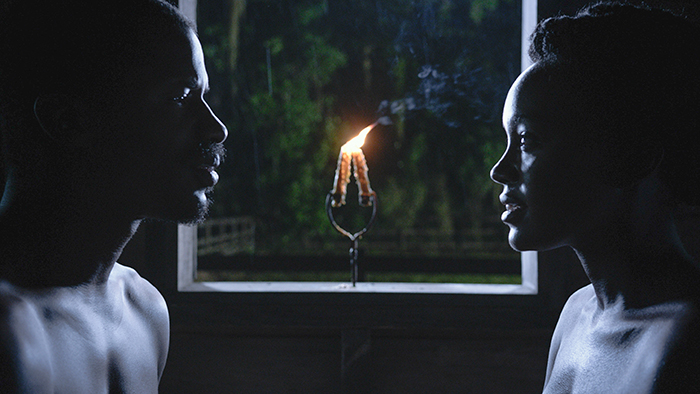 HULLFISH: There was also a series of dreams and flashbacks. Were those written into the places you edited them or did those edits happen because you found this was the best place for them despite the script.
HULLFISH: There was also a series of dreams and flashbacks. Were those written into the places you edited them or did those edits happen because you found this was the best place for them despite the script.
ROSENBLUM: Both. We started the movie with a dream sequence. The original script did not start with that dream sequence but it was always near the very front of the movie. How you start your movie informs the whole movie and so leading with the dream sequence enabled us to use this device whenever we wanted to. But mostly that stuff was scripted. I don’t believe it was scripted for the very end, however.
HULLFISH: Talk to me a little about the importance of structure as you’re editing…not inside the scene necessarily, but the structure of the movie itself, the story.
ROSENBLUM: You know, this is the job: restructuring. I’ve never been on a movie that didn’t restructure…some more than others. Birth is a fairly linear story. But towards the end of the movie it started to feel like “we have no time now for exposition.” There’s just stuff that has to be done. A movie can only hold so much, and audiences toward the latter part of the movie are not that inclined to want to get new information. In general, though I can’t say that we restructured enormously in this movie. Material gets thrown away all the time. I wish I was smart enough to read a script and say, “You don’t need that.” I’m only smart enough to look at a film and say, “You don’t need that.”
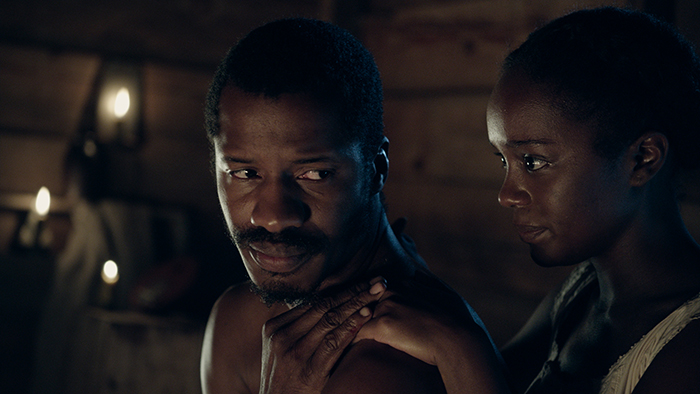 HULLFISH: As I’m editing I can definitely feel, “I can cut these lines out,” or “We don’t need the first twenty seconds of this scene,” but the director has to get to the point too, right?
HULLFISH: As I’m editing I can definitely feel, “I can cut these lines out,” or “We don’t need the first twenty seconds of this scene,” but the director has to get to the point too, right?
ROSENBLUM: Exactly, no question about it. What happens, especially in the first parts of movies, is that there’s probably the same material in two or three different scenes because no one really knows which way of telling it is going to be the best way. And that’s why some movies often feel top heavy, that’s why it takes a long time for movies to get going. Because you have a lot of stuff that you want to get out there, but what I’ve found over the course of doing this for a long time is that nobody really wants to see backstory. They’re not interested in backstory. If they’re going to get backstory, they’d like to get it in the least painful way possible, and the least painful way is not seeing a scene about backstory. So, if you can get it in the course of a scene about something else, so much the better. Much of my time is spent on the first third of the movie: trying to whittle it down, so that a movie can start where its action really starts as quickly as possible, hopefully within the first ten minutes.
HULLFISH: I talked to Pietro Scalia about The Martian, and the whole open of that movie, what was the first seven or eight minutes, took place forty minutes into the script, and they moved it up because they got to that point in the movie and they’re like, nobody cares about the backstory anymore, so the only way that this matters is if it’s part of the story from the beginning.
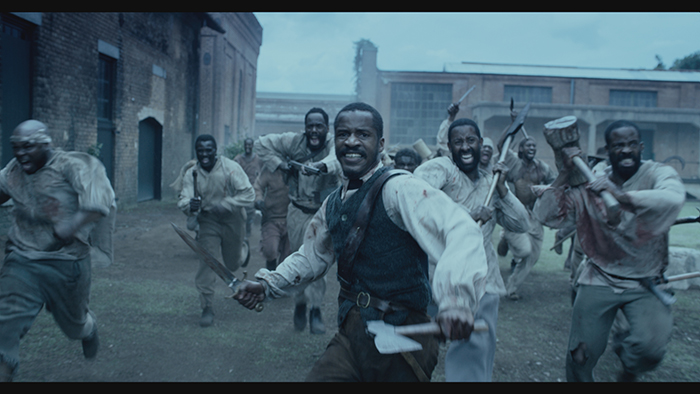 ROSENBLUM: When we did “Glory,” which in its present version, its release version starts with the Battle of Antietam. So the first reel of the movie, which was ten or eleven minutes, except for one scene, was thrown away. We started the movie in reel two because all the backstory about Matthew and Cary Elwes and Searles growing up, we didn’t need it. One day we said, “We should just start with the battle.” It’s a great way to start the movie, it tells you everything you need to know, and then we’ll find out whatever past history we need after the battle, and that’s what we did. And it’s a great big lesson. I used to take “Glory” to a UCLA extension class–my friend did a screenwriting class there—and on his last meeting of every semester he would bring me in. We would show the first cut I did on the movie. These were all writers and he’d say, “This is what the movie had to begin with and this is how it now starts.” And they would freak out because they’re writers, and they don’t realize that the script is only the bible until you shoot it, then once you shoot it, it’s thrown away. I rarely look at a script. I rarely look at it at all because I don’t want to be told how scenes should go together. I don’t even want to be told how the dialogue should go together. If I think there’s a better way to arrange the dialogue, I just do it. And some directors are okay with it and some aren’t.
ROSENBLUM: When we did “Glory,” which in its present version, its release version starts with the Battle of Antietam. So the first reel of the movie, which was ten or eleven minutes, except for one scene, was thrown away. We started the movie in reel two because all the backstory about Matthew and Cary Elwes and Searles growing up, we didn’t need it. One day we said, “We should just start with the battle.” It’s a great way to start the movie, it tells you everything you need to know, and then we’ll find out whatever past history we need after the battle, and that’s what we did. And it’s a great big lesson. I used to take “Glory” to a UCLA extension class–my friend did a screenwriting class there—and on his last meeting of every semester he would bring me in. We would show the first cut I did on the movie. These were all writers and he’d say, “This is what the movie had to begin with and this is how it now starts.” And they would freak out because they’re writers, and they don’t realize that the script is only the bible until you shoot it, then once you shoot it, it’s thrown away. I rarely look at a script. I rarely look at it at all because I don’t want to be told how scenes should go together. I don’t even want to be told how the dialogue should go together. If I think there’s a better way to arrange the dialogue, I just do it. And some directors are okay with it and some aren’t.
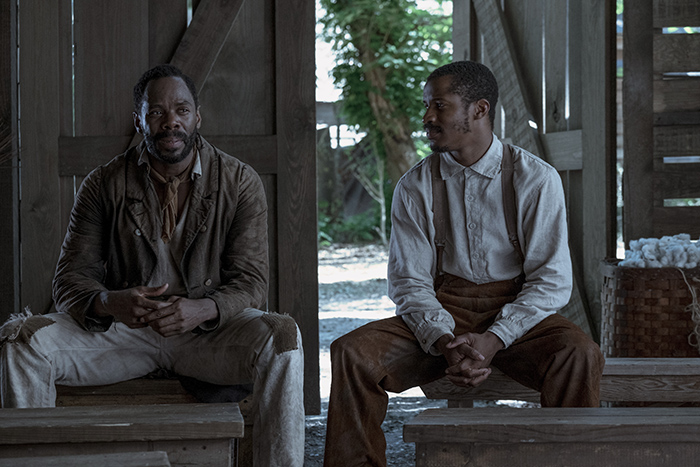 HULLFISH: Yeah, I did editorial consulting on a film, and my first piece of advice was “Throw out the first thirty minutes of the movie. It’s just backstory.”
HULLFISH: Yeah, I did editorial consulting on a film, and my first piece of advice was “Throw out the first thirty minutes of the movie. It’s just backstory.”
ROSENBLUM: And there’s a good reason for it. David Mamet wrote a really great letter to his staff about how the writing was going to be on his show. For example, two characters are never going to sit in a room talking about a third character who’s not in the room, he said because that doesn’t happen in real life and that’s not drama. In a large way, scenes, if they don’t have drama in them, they’re not scenes, they’re something else. Scenes that are only exposition do not belong in a movie. They’re not scenes. They’re in there a lot of the time, but if they don’t further the drama, then what is the point? And I try to hold to that as best as I can. Obviously there’s room to wiggle here.
HULLFISH: How do you view dailies?
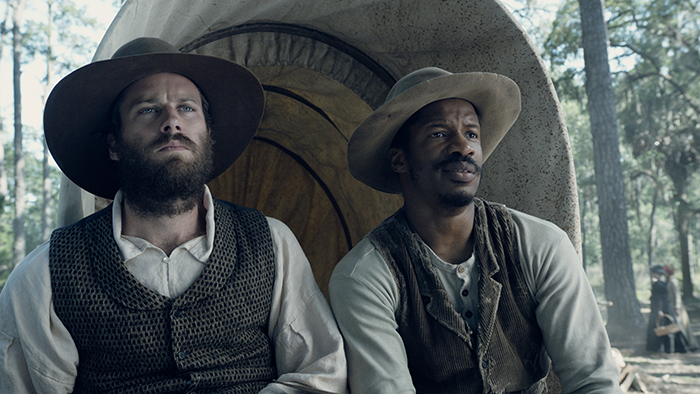
ROSENBLUM: When I work with Ed Zwick, every night we look at dailies in some fashion. It used to be on the big screen. We don’t look at all of what he shot. We may look at one take of each setup. And that’s very useful to me so I know what the coverage is right away and I can try to figure out what I like, what I don’t like and I can listen to him telling me what particular scene or take he likes—he doesn’t do that so that I cut it that way, he just wants me to know what it is he likes. In that way I have a familiarity with the material. Let’s say the next morning I’m going to work on those scenes. Some people first look at everything and then start to cut. Me, I just start to cut right away and try to examine everything as I cut. Both of these techniques have pluses and minus. The plus of my technique is I get to cut right way. I have very little in the way of patience as a human being, so that’s good for me. It gets me working and functioning. The minus is I might overlook something because I’m in the midst of cutting. I haven’t examined everything first. So it’s a trade-off, but that’s how I work. And what I really like to do is I’ll be working and then I’ll say, “Oh, I have an idea. What if I have a shot like this and I can put it in here?” And I’ll just find the first shot that works for me and what I’m looking for and I’ll put it in, just to see. And if then I like it I’ll then go look and see if there’s a better version of that somewhere. But often I find that cutting—I don’t know how to put this—it’s not examining the material always that makes for a cut. Sometimes what you are looking for is actually more important than what is shot. If directors can give you a lot of a lot of beats in a sequence, that’s a great thing because you know as an editor you’re going to supply even more beats. But sometimes the behavior you’re looking for is not necessarily in the dailies because the director didn’t see that beat and you start to look for the behavior that you would do if you were in the position the protagonist was in. So, sometimes I start looking for stuff above and beyond what might actually be there. That’s how I work.
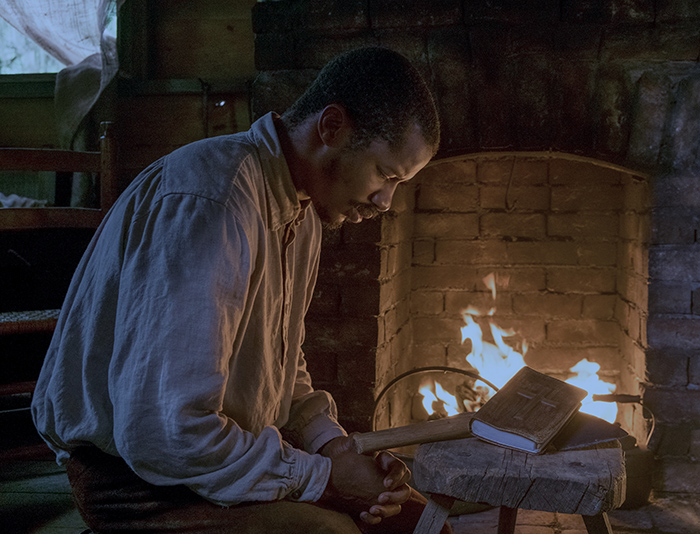
HULLFISH: So when you sit down and look at that bin, are you looking for a specific shot size or angle you know is in the coverage?
ROSENBLUM: When we look at dailies together the director might be telling me what he likes but very often I’ll be watching the material, letting it sort of wash over me and I’ll see something not obvious and I’ll say to myself, “I love whatever that was,” whether it’s a look or some kind of movement or whatever it happens to be, and I will tell my assistant, Cindy, to remind me that this take has this thing I like in it. And over the course of time I learned that these instinctual bits were often the crucial components in the scene’s structure. I learned to trust my instincts on material. A lot of it can be changed. It’s very malleable. But when you find the thing that makes the scene sing, then you have it.
HULLFISH: Absolutely. What about performance for you? This movie, “Birth of a Nation,” had such rich and emotional performance and also very subtle performance. Tell me about trying to find that and sculpt it and mold it.
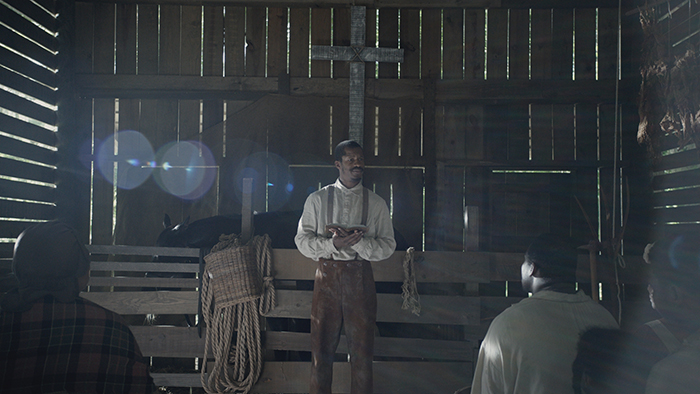 ROSENBLUM: I often see filmmakers like Gus Van Sant, who I don’t know – that he’ll actually throw what seems to be the most emotional moment in a wide shot and I’ll go, “That’s an interesting way to play that.” The beat felt too obvious to him. He put it away, over there, so it didn’t have that obviousness to it. I find myself doing that more these days. I just don’t want to be as obvious. It’s a way of making sure that performance is in a plane, a field, that is believable at all times. I don’t like when stuff goes beyond believable.
ROSENBLUM: I often see filmmakers like Gus Van Sant, who I don’t know – that he’ll actually throw what seems to be the most emotional moment in a wide shot and I’ll go, “That’s an interesting way to play that.” The beat felt too obvious to him. He put it away, over there, so it didn’t have that obviousness to it. I find myself doing that more these days. I just don’t want to be as obvious. It’s a way of making sure that performance is in a plane, a field, that is believable at all times. I don’t like when stuff goes beyond believable.
HULLFISH: Cutting on Avid I’m assuming?
ROSENBLUM: Yes, Avid for sure.
HULLFISH: What about sound design? Do you do a lot of that yourself? Is it important to sell your cuts? Is it something you assign to assistants a lot of the time?
ROSENBLUM: No, I cut two things. I cut all my music tracks, and also—I don’t necessarily cut all the effects tracks, but if Cindy cuts them I will then take what she did and generally simplify. For me, the sound design on the work picture, is about what is the important piece of sound. Let me give you an example. In “Braveheart,” when the two opposing sides were running towards each other in the climactic battle—in fact, probably in “Birth of a Nation” too, when they’re running toward each other in the climactic battle—I wanted each side to have its own sound so that when one side was coming forward it would be “ahhh” (mimics low-pitched hum), and then when the other side was coming forward it would be “ahhh” (mimics high-pitched hum), so that when you cut back and forth between them it was not a consistent sound, there was a change in pitch, and the change in pitch makes people edgy. And the edginess is important when you see these two sides going at each other and they’re going to collide. That’s the kind of sound work I prefer, where I can give the lead character if he’s going to shoot the bad guy, I could put a howitzer sound in for his gun, and if it’s loud and good enough it’s fine for me for right then and there. At the end of the day I know it’s going to be different, but it’s still going have to have the same power that that howitzer might have when we finally get to it. I feel better about being selective. I don’t really care about backgrounds so much as long as they sound smooth and consistent. The sound design is meant to be looked at later with the sound designer, and unfortunately I find that very often the sound design at the end of the day, when it’s really, really professional, doesn’t have the same rawness that the temp track had and then I often in the dubbing stage find myself trying to rediscover how to get the rawness back in to a sound design that’s way better than I ever had, but the rawness has disappeared.
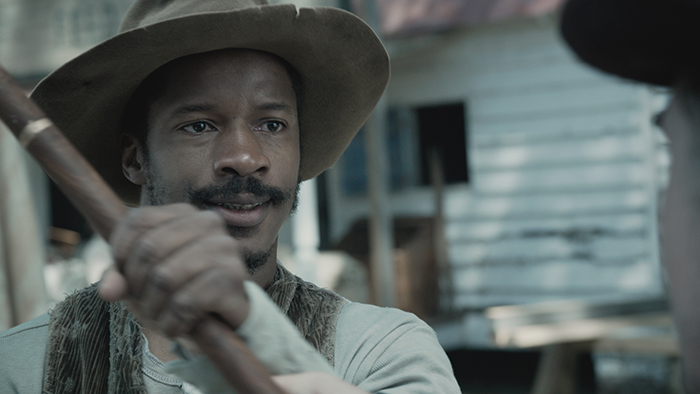
HULLFISH: You’re not the first editor who has mentioned falling in love with the sound you’ve been listening to for ten weeks or ten months.
ROSENBLUM: But there’s good reason. Because you don’t have the same amount of tracks as a final sound design is going to have, you have to be much more careful about what sounds you’re emphasizing. And then when the sound guys get in, all of a sudden everything has a sound and you say what happened? What was the sound I had? On the dubbing stage its like, can you just bring in my tracks for a second, and then there are many groans of course, because we’ve already been down that road many times before. But what I’m looking for is what made it feel alive? I know it’s terrible. I get to mix though very often with people I love, like Andy Nelson over in LA and Paul Massey and Scott Millan. They know me well enough to know that I’m not really trying to say “this isn’t good,” I just want to keep what it was that made it feel alive to me.
HULLFISH: Let’s talk about the way pacing in a scene changes when it is seen in the context of the entire movie.
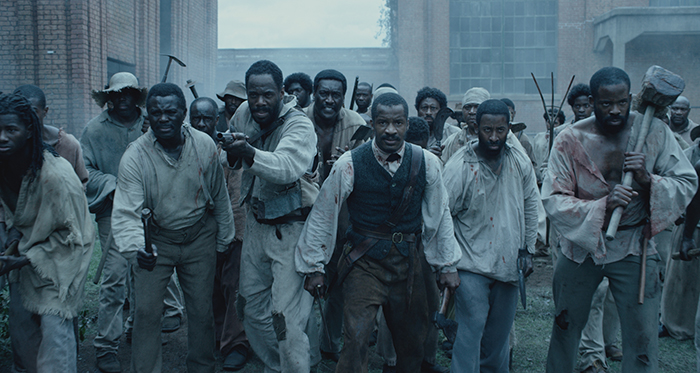 ROSENBLUM: It’s part of the process. If you haven’t been cutting for a while, like I had been cutting on another movie so I was sort of “in shape,” but when I’m not in shape, I cut these scenes then go back to it a couple weeks later and it feels like I was on Valium when I cut that scene. You just have to get your sea legs again. The context changes things, but mostly the rhythm of the scene remains. You go in there and you start to trim and you realize six frames long here and eight there and twelve here and two feet long here and all that stuff. If it feels good rhythmically in the first cut, it’s going to keep that rhythm more or less, unless the scene is one of the minor scenes as opposed to major scenes. The major scenes very often I find they don’t really change at all. The big scenes in a movie, like the dental scene, really didn’t change. And the scene where Nate makes his speech directly thereafter: it changed a little here and there—we added some reactions—but the actual rhythm of the scene never changed. Like a river flowing, it had its own inherent sound. When I first started out as an assistant editor I used to think, “How does anybody cut a movie starting at scene 70 and then going back to scene 12 and then over to scene 109?” But the DNA of the movie is the DNA of the movie. And yes, things have to be adjusted when you start to see what came before, but the DNA is the same. Now to me, it doesn’t matter where I start. I tend not to want to start at the beginning because the first couple weeks of shooting are always the worst anyway. You have to get up to speed quickly—Nate got up to speed quickly—but the first stuff was harder to cut because he too, as well as the rest of the crew were finding their sea legs. Everybody is at their worst when you start up. That’s why a good production manager knows to schedule the stuff that he thinks might not make the movie first. When we did “Last Samurai,” we shot toward the end of the movie first, and it never functioned properly. Nobody was ready to do that, but it had to do with schedules. I hate when a schedule dictates shooting order. You’re hopefully going to shoot the end of the movie towards the end because everyone’s got their rhythms and cast and crew have gone on an emotional journey together.
ROSENBLUM: It’s part of the process. If you haven’t been cutting for a while, like I had been cutting on another movie so I was sort of “in shape,” but when I’m not in shape, I cut these scenes then go back to it a couple weeks later and it feels like I was on Valium when I cut that scene. You just have to get your sea legs again. The context changes things, but mostly the rhythm of the scene remains. You go in there and you start to trim and you realize six frames long here and eight there and twelve here and two feet long here and all that stuff. If it feels good rhythmically in the first cut, it’s going to keep that rhythm more or less, unless the scene is one of the minor scenes as opposed to major scenes. The major scenes very often I find they don’t really change at all. The big scenes in a movie, like the dental scene, really didn’t change. And the scene where Nate makes his speech directly thereafter: it changed a little here and there—we added some reactions—but the actual rhythm of the scene never changed. Like a river flowing, it had its own inherent sound. When I first started out as an assistant editor I used to think, “How does anybody cut a movie starting at scene 70 and then going back to scene 12 and then over to scene 109?” But the DNA of the movie is the DNA of the movie. And yes, things have to be adjusted when you start to see what came before, but the DNA is the same. Now to me, it doesn’t matter where I start. I tend not to want to start at the beginning because the first couple weeks of shooting are always the worst anyway. You have to get up to speed quickly—Nate got up to speed quickly—but the first stuff was harder to cut because he too, as well as the rest of the crew were finding their sea legs. Everybody is at their worst when you start up. That’s why a good production manager knows to schedule the stuff that he thinks might not make the movie first. When we did “Last Samurai,” we shot toward the end of the movie first, and it never functioned properly. Nobody was ready to do that, but it had to do with schedules. I hate when a schedule dictates shooting order. You’re hopefully going to shoot the end of the movie towards the end because everyone’s got their rhythms and cast and crew have gone on an emotional journey together.
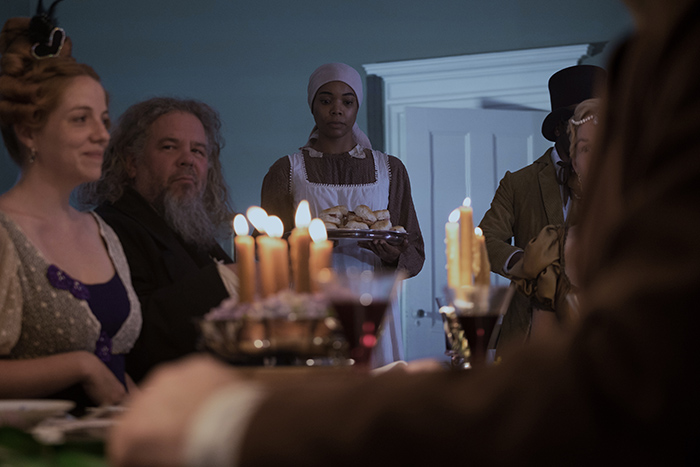
HULLFISH: Stephen Mirrione was talking about that with “The Revenant.” He said there’s a lot of scenes they cut out, but he was glad that they shot them just so that the actors had the experience of doing those scenes and being cold and uncomfortable and marching through the snow together.
ROSENBLUM: Absolutely no question about it.
HULLFISH: How do your assistants set up your bins for you?
ROSENBLUM: I’ve had the same assistant, Cynthia Thornton, for about twenty-five years. She will take the material which is in ABCDE, order or whatever it is, and she knows I want it to be put in cutting order. Now that doesn’t mean it’s going to stay in cutting order, but it’s organized so that I can go from whatever pieces correspond to each other as best as possible in a diagrammatic way so I can look at them and see that they go together. I understand that this isn’t the way the world works, but close enough so that I don’t have to go through ABCDE to get to the stuff I’m looking for. If I can see things diagrammatically in front of me, I know what I’m looking for by just looking at it. So I keep things in frame view and I put spaces between certain rows so I can see part two of the scene is down there and there is part three and so I can sort of wend my way around more easily.
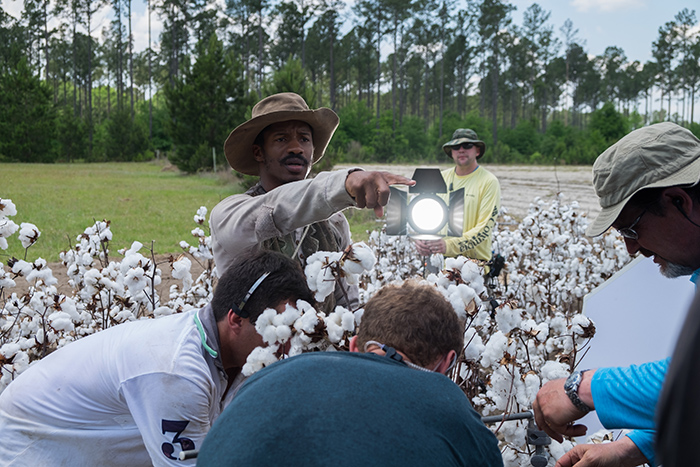
HULLFISH: You were talking about starting to cut very quickly and that you just kind of jump into it. Do you start from circled takes or is it just intuitive and you just jump in, you see a frame that you like.
ROSENBLUM: I do put circled takes up top and what used to be called B Neg (non-“printed” takes) underneath, so I know what the director chose as a circled take. You know, some directors don’t know the difference between a circled take and a non-circled take so it’s hard to really know. But I look at everything. If I can’t find something in what was called a printed take, I will then go down and look in the other takes to find what I’m looking for. Obviously I try to look at the circled takes first because there’s some preference there and usually you can see what the preference is right away. You look at an early take and you say, “Boy, they sure traveled the good road to get to where we got to because it’s much better.” But scenes are endlessly repurposed in a movie and that’s the hard part for editors. A lot of editing is linear, but the really good editors re-purpose stuff to make the scene do what the new intention must be. And that’s not in the script. That is based on the demands of the story and to do that you sometimes start looking for a less dramatic piece. For example, I need a flat reaction that wasn’t there because now we’re making this scene do something either slightly different or entirely different than it was meant to do.
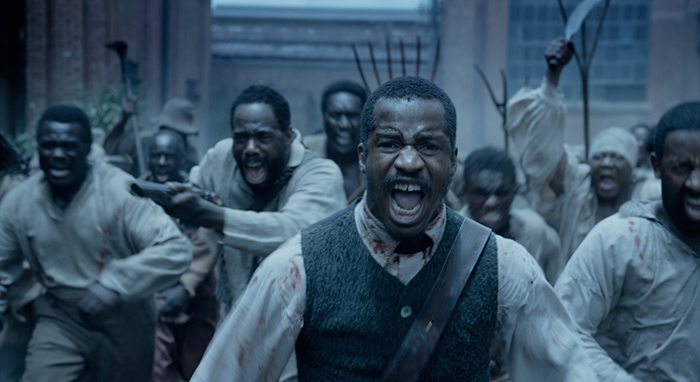
HULLFISH: I love that, that’s great advice. Thank you so much for spending so much time with us and sharing all your wisdom and point of view.
ROSENBLUM: Thank you, this was fun.
If you are interested in reading more interviews like this, check out this link and follow me on Twitter @stevehullfish.

Filmtools
Filmmakers go-to destination for pre-production, production & post production equipment!
Shop Now